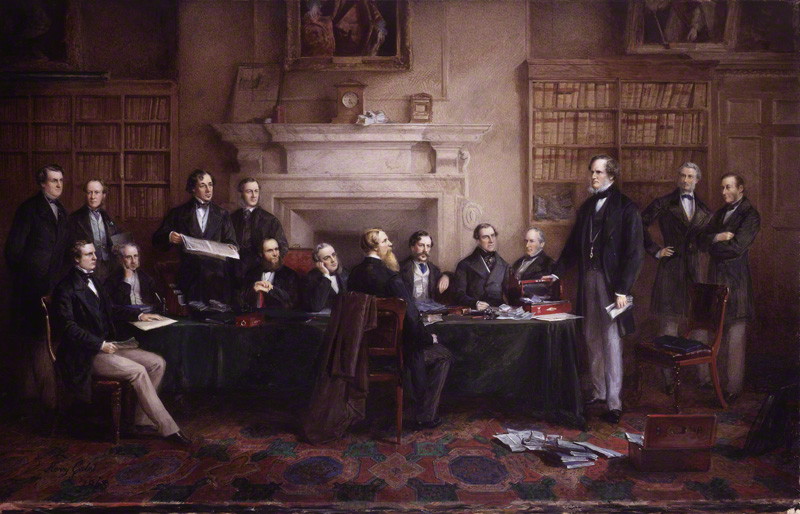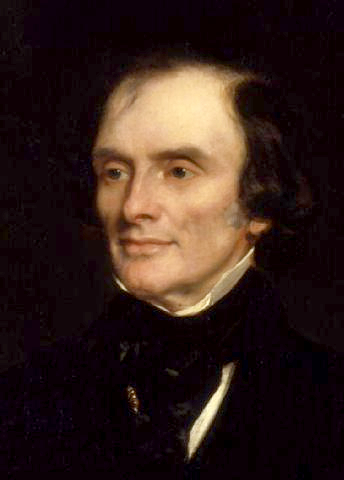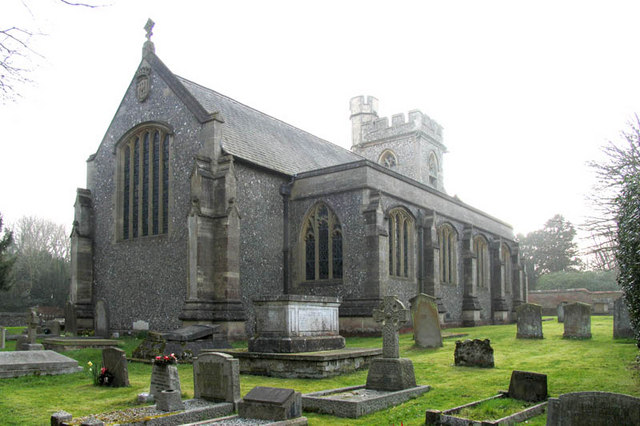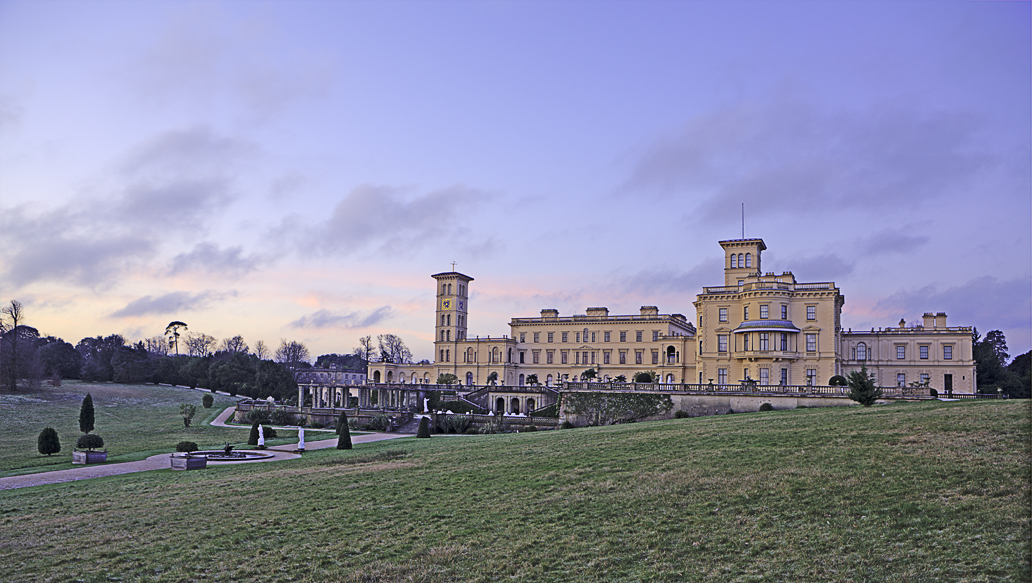by Susan Flantzer
© Unofficial Royalty 2018

Credit – Wikipedia
Edward George Geoffrey Smith-Stanley, 14th Earl of Derby was Prime Minister of the United Kingdom three times during the reign of Queen Victoria (February 1852 – December 1852, 1858 – 1859, and 1866 – 1868) but his total time as Prime Minister adds up to only three years and nine months. Born on March 29, 1799, at Knowsley Hall in Knowsley, Lancashire, England, Stanley was the eldest of the seven children of Edward Smith-Stanley, 13th Earl of Derby and Charlotte Margaret Hornby, daughter of Reverend Geoffrey Hornby. Stanley was educated at Eton College and at Christ Church, Oxford.
He had six younger siblings:
- Lady Charlotte Elizabeth Smith-Stanley (1801 – ?), married Edward Penrhyn, had one son and one daughter
- The Honorable Henry Thomas Stanley (1803 – 1875), married Anne Woolhouse, daughter of Richard Woolhouse, had four sons
- Lady Emily Lucy Smith-Stanley (1804 – ?)
- Lady Louisa Emily Stanley (1805 – 1825), married Colonel Samuel Long, no children
- Lady Eleanor Mary Smith-Stanley (1807 – ?), married Rev. Canon Frank George Hopwood, had one daughter
- Colonel The Honorable Charles James Fox Stanley (1808 – 1884), married Frances Augusta Campbell, daughter of General Sir Henry Frederick Campbell, had four sons and four daughters

Thomas Stanley, 1st Earl of Derby; Credit – Wikipedia
The Stanley family has long-served kings. Thomas Stanley, 1st Earl of Derby (1435 – 1504) was a power player during the Wars of the Roses, the battle for the crown of England between the House of Lancaster and the House of York. During the early part of the 1st Earl’s career, Henry VI was king and head of the House of Lancaster. The 1st Earl then formed a powerful alliance with the House of York when he married Eleanor Neville, daughter of Richard Neville, 5th Earl of Salisbury (a descendant of Edward III) and sister of Richard Neville, 16th Earl of Warwick and 6th Earl of Salisbury known as “The Kingmaker”. After Warwick was killed and the 1st Earl’s first wife died, the 1st Earl of Derby married Lady Margaret Beaufort, whose son Henry Tudor was the leading Lancastrian claimant. The 1st Earl’s brother Sir William Stanley famously switched sides at the Battle of Bosworth. Instead of supporting King Richard III and the Yorkists, Sir William attacked them, helping to secure a victory for Henry Tudor, who became King Henry VII, and the Lancastrians. After the battle, Henry Tudor’s men were yelling, “God save King Henry!” Inspired by this, Thomas Stanley, 1st Earl of Debry found Richard’s battle crown and placed it on the head of his stepson, Henry Tudor, saying, “Sir, I make you King of England.”
In 1822, Stanley was elected as a Whig member of the House of Commons. He served as a member of the Cabinet in several positions: Under-Secretary of State for War and the Colonies (1827 – 1828), Chief Secretary for Ireland (1830 – 1833), and Secretary of State for War and the Colonies (1833 – 1834 and 1841 – 1845). In 1844, Stanley was created Baron Stanley of Bickerstaffe, a subordinate title of his father by a special Royal Decree called a Writ of Acceleration and he became a member of the House of Lords during his father’s lifetime. When his father died on June 30, 1851, he inherited his title as the 14th Earl of Derby.

Edward Smith-Stanley, 14th Earl of Derby by Thomas Henry Illidge, 1844; Credit – Wikipedia
In 1841, Stanley became a member of the Conservative Party and he served as Leader of the Conservative Party from 1846 – 1868. He formed a minority government and became Prime Minister in February 1852 following the collapse of Lord John Russell‘s Whig government. Ten months later, the minority government fell. Stanley was the Leader of the Opposition from the time his first government fell until 1858. In that year, Stanley formed another minority government upon the resignation of Lord Palmerston as Prime Minister. However, once again his government was short-lived, lasting only one year, having narrowly lost a vote of no-confidence. Stanley again served as Leader of the Opposition from 1859 – 1866.

The Derby Cabinet of 1867 by Henry Gales, 1868; Credit – Wikipedia
Stanley returned to power for the third and last time in 1866, following the collapse of Lord Russell’s second government. This term was most noted for the Reform Act 1867, an electoral reform by which the new industrial cities for the first time received a significant representation in the House of Commons. In 1868, Stanley resigned as Prime Minister on advice from his doctor but continued to serve in the House of Lords until his death.

Emma Bootle-Wilbraham, Stanley’s wife; Credit – Wikipedia
On May 31, 1825, Stanley married The Honorable Emma Bootle-Wilbraham, daughter of Edward Bootle-Wilbraham, 1st Baron Skelmersdale. The couple had two sons and one daughter:
- Edward Henry Stanley, 15th Earl of Derby (1826 – 1893), married Lady Mary Sackville-West, daughter of George John Sackville-West, 5th Earl De La Warr, no children
- Lady Emma Charlotte Stanley (1835 – 1928), married Sir Wellington Patrick Manvers Chetwynd Talbot, had six sons and two daughters
- Frederick Arthur Stanley, 16th Earl of Derby (1841 – 1908), married Lady Constance Villiers, daughter of George William Frederick Villiers, 4th Earl of Clarendon, had ten children
Stanley’s younger son, Frederick Arthur Stanley, 16th Earl of Derby served as Governor-General of Canada from 1888 – 1893. While in Canada, Stanley’s sons played ice hockey and Lord and Lady Stanley became hockey fans. In 1892, Stanley gave Canada a treasured national icon, the Stanley Cup. Originally a trophy for Canada’s best amateur hockey team, it is now the championship trophy for the National Hockey League which has professional teams in Canada and the United States.
Twenty months after he resigned as Prime Minister, Edward Smith-Stanley, 14th Earl of Derby died on October 23, 1869, aged 70, at Knowsley Hall in Knowsley, Lancashire, England. He was buried at St. Mary’s Church in Knowsley. In 1871–72 a memorial chapel to the 14th Earl of Derby was added to St. Mary’s Church.

St. Mary’s Church in Knowsley, Lancashire, England; Credit – By Sue Adair, CC BY-SA 2.0, https://commons.wikimedia.org/w/index.php?curid=4754011
This article is the intellectual property of Unofficial Royalty and is NOT TO BE COPIED, EDITED, OR POSTED IN ANY FORM ON ANOTHER WEBSITE under any circumstances. It is permissible to use a link that directs to Unofficial Royalty.
Works Cited
- Baird, Julia. Victoria The Queen. Random House, 2016.
- https://de.wikipedia.org/wiki/Edward_Smith-Stanley,_14._Earl_of_Derby
- En.wikipedia.org. (2018). Edward Smithe-Stanley, 14th Earl of Derby. [online] Available at: https://en.wikipedia.org/wiki/Edward_Smith-Stanley,_14th_Earl_of_Derby[Accessed 27 Jul. 2018].
- Erickson, Carolly. Her Little Majesty: The Life of Queen Victoria.Simon and Schuster, 1997.
- Hubbard, Kate. Serving Victoria: Life In The Royal Household. Harper Collins Publishers, 2012














































